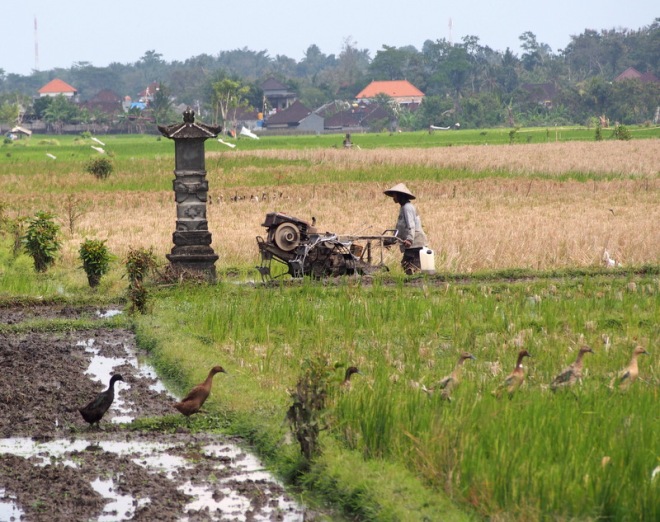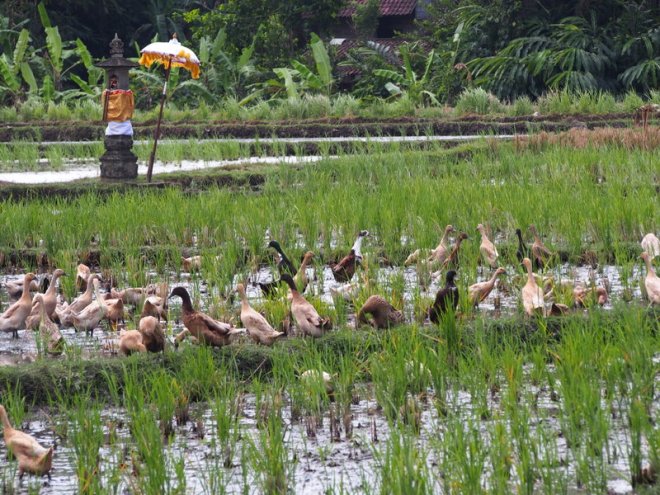Rural Bali offers entrancing scenery. Traditional life endures. The island’s complex irrigation systems nurture abundant crops and are based on community cooperation to ensure fair water distribution at village and district levels. Neighbours help each other with the hard work of subsistence and semi-subsistence agriculture, where tiny plots of land are the norm. Religious and cultural practices help to cement traditional values and cooperation.
My friend Wayan boasts that his villager mother in her late 60s can still carry a 25 kilogram load balanced on her head.
The rice harvest near Amed in north east Bali is threshed and winnowed.
South of Amed, impossibly green rice fields provide an intricate mosaic. As always, a shrine is never far away.
Near Tabanan, a farmer cultivates a field for the next crop of rice, using a Dong Feng (East Wind) walk behind tractor.*
Bananas and coconuts flourish in the lush background of these rice fields near Tabanan, while ducks help to control pests and provide another food source.
A view near Sideman.
* I have to confess to having a slight Dong Feng obsession after visits to rural China beginning in the early 1990s. The Dong Feng walk tractor revolutionised Chinese agriculture after its invention in 1952. Previously, rice fields were mainly tilled and worked by hand or water buffalo. The Dong Feng is very versatile. Besides its use as a walk behind tractor, with a flat wooden tray, it becomes a truck, or a bus for transporting villagers, and its pulley can operate other machinery like saws and concrete mixers.








